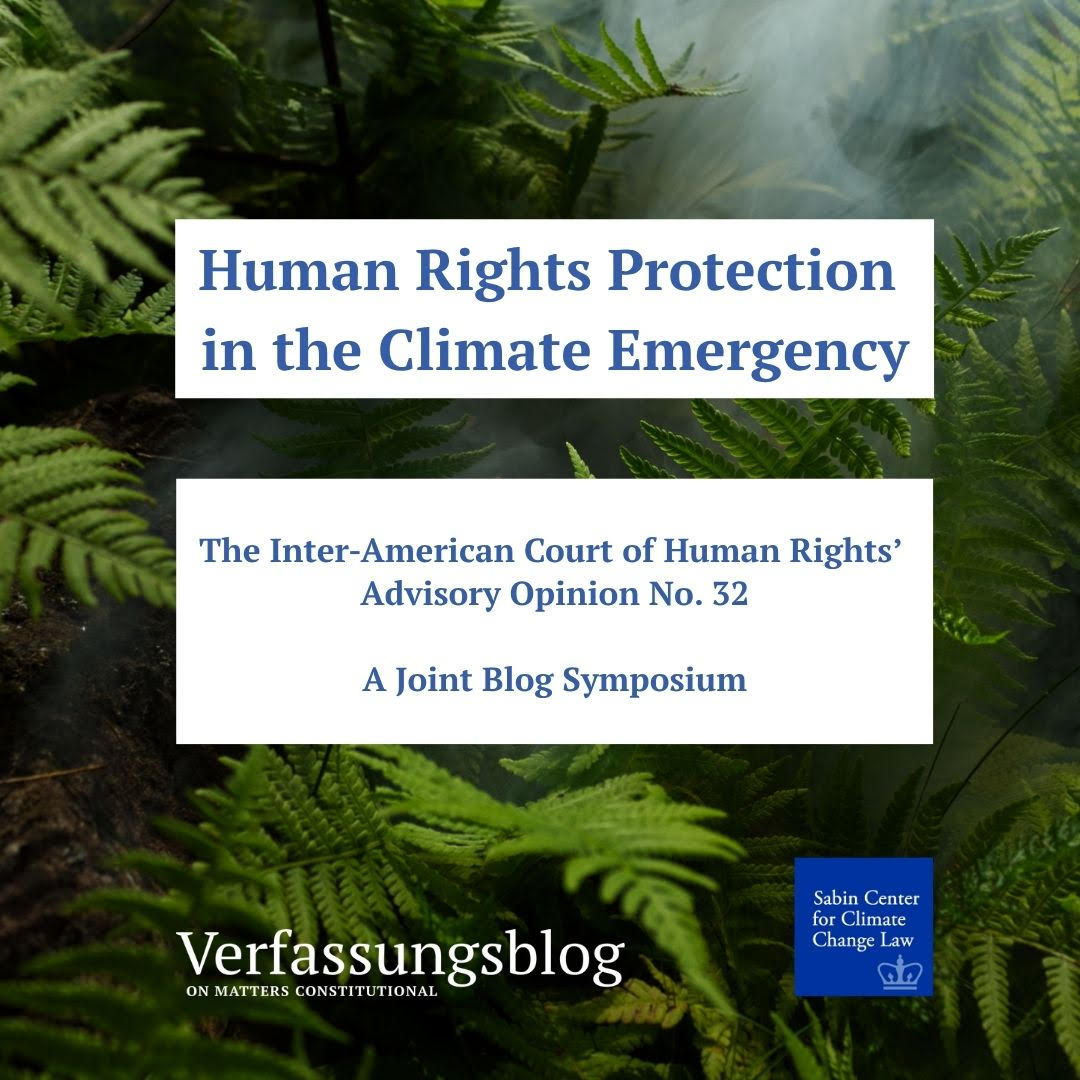International Court Ruling on Climate Change and Sustainable Development Goals
Executive Summary
The United Nations’ principal judicial organ has delivered a landmark ruling, establishing a legal obligation for all countries to take action on climate change under international law. This decision, championed by the nation of Vanuatu and Pacific youth organizations, has been recognized by Secretary-General António Guterres as a significant victory for climate justice. The ruling directly reinforces the urgency and legal standing of the 2030 Agenda for Sustainable Development, with profound implications for several Sustainable Development Goals (SDGs).
Mandated Actions and Alignment with SDG 13 (Climate Action)
The court’s decision provides a powerful legal impetus for achieving the targets outlined in SDG 13: Climate Action. It moves the discourse from voluntary commitments to legally binding obligations. Key mandated actions include:
- Implementation of substantive reductions in national greenhouse gas emissions.
- Enforcement of policies and measures to limit global warming in line with international agreements.
This ruling strengthens the institutional and legal frameworks necessary to integrate climate change measures into national policies, strategies, and planning, a core target of SDG 13.
Upholding SDG 16 (Peace, Justice and Strong Institutions)
The case and its outcome are a clear manifestation of SDG 16: Peace, Justice and Strong Institutions. The ruling demonstrates the critical role of international legal institutions in upholding global agreements and ensuring accountability.
- Access to Justice: It affirms the right of climate-vulnerable nations and their populations, including youth, to seek justice and hold more developed nations accountable through international legal channels.
- Effective Institutions: The court’s decision reinforces its role as an effective, accountable, and inclusive institution at the global level.
- Rule of Law: The ruling strengthens the rule of law at the international level by clarifying state obligations regarding climate change.
Collaborative Impact on the Broader SDG Framework
The initiative led by Vanuatu highlights the importance of SDG 17: Partnerships for the Goals, showcasing a powerful collaboration between a Small Island Developing State (SIDS) and youth-led civil society. Furthermore, the ruling’s implications extend to numerous other goals:
- SDG 7 (Affordable and Clean Energy): The mandate to cut emissions will accelerate the global transition to sustainable energy sources.
- SDG 14 (Life Below Water): By compelling action to limit warming, the ruling directly supports the protection of marine ecosystems, which are critically threatened by rising ocean temperatures and acidification.
- SDG 11 (Sustainable Cities and Communities): The decision supports efforts to make human settlements more inclusive, safe, resilient, and sustainable in the face of climate-related hazards.
1. Which SDGs are addressed or connected to the issues highlighted in the article?
The article highlights issues that are directly connected to several Sustainable Development Goals. The analysis identifies the following SDGs as relevant:
-
SDG 13: Climate Action
This is the most prominent SDG addressed. The article’s core subject is a ruling by the “UN’s top court” that mandates countries to “act on climate change,” specifically by “cutting emissions and limiting warming.” This directly aligns with the central objective of SDG 13, which is to take urgent action to combat climate change and its impacts.
-
SDG 16: Peace, Justice and Strong Institutions
The article emphasizes “climate justice” and the role of international law in enforcing climate action. The fact that the case was brought before the “UN’s top court” and resulted in a ruling that holds countries accountable under “international law” points directly to SDG 16. This goal aims to promote just, peaceful, and inclusive societies by building effective, accountable, and inclusive institutions at all levels.
-
SDG 17: Partnerships for the Goals
The initiative described in the article was “led by Vanuatu and Pacific youth,” showcasing a partnership between a developing nation and a civil society group (youth) to leverage international institutions (the UN court) for global action. This collaborative effort to achieve a common goal is the essence of SDG 17, which encourages global partnerships for sustainable development.
2. What specific targets under those SDGs can be identified based on the article’s content?
Based on the information provided, several specific targets can be identified:
-
Under SDG 13 (Climate Action):
- Target 13.2: “Integrate climate change measures into national policies, strategies and planning.” The court’s ruling that “countries must act on climate change” and “cut emissions” directly compels nations to incorporate these mandates into their national frameworks.
-
Under SDG 16 (Peace, Justice and Strong Institutions):
- Target 16.3: “Promote the rule of law at the national and international levels and ensure equal access to justice for all.” The article is centered on a ruling from the “UN’s top court” under “international law,” which is a clear application of this target at the international level. The case, brought by Vanuatu, demonstrates access to international justice mechanisms.
- Target 16.8: “Broaden and strengthen the participation of developing countries in the institutions of global governance.” The leadership of Vanuatu, a small island developing state, in this landmark legal case is a direct example of this target being met.
-
Under SDG 17 (Partnerships for the Goals):
- Target 17.14: “Enhance policy coherence for sustainable development.” The court’s ruling aims to create a coherent legal obligation for all countries to act on climate change, thereby enhancing policy alignment on a global scale.
- Target 17.16: “Enhance the global partnership for sustainable development, complemented by multi-stakeholder partnerships…” The case itself, described as being “led by Vanuatu and Pacific youth,” exemplifies a multi-stakeholder partnership (government and civil society) working to achieve a sustainable development objective.
3. Are there any indicators mentioned or implied in the article that can be used to measure progress towards the identified targets?
The article, while brief, implies several indicators that can be used to measure progress:
-
Indicators for SDG 13 Targets:
- Implied Indicator for Target 13.2: The article explicitly mentions the need for “cutting emissions.” This points to progress being measured by official data on greenhouse gas emissions reductions by country, which relates to Indicator 13.2.2 (“Total greenhouse gas emissions per year”). The establishment of national policies that include emission reduction targets would be another key measure.
-
Indicators for SDG 16 Targets:
- Implied Indicator for Target 16.3: The existence of the court ruling itself serves as a qualitative indicator that international legal mechanisms for justice are functioning and accessible. The article’s statement that countries “must act… under international law” confirms the enforcement of the rule of law.
-
Indicators for SDG 17 Targets:
- Implied Indicator for Target 17.16: The successful legal challenge “led by Vanuatu and Pacific youth” is a concrete example that can be documented as a successful multi-stakeholder partnership for sustainable development, serving as a qualitative indicator of progress.
4. Create a table with three columns titled ‘SDGs, Targets and Indicators” to present the findings from analyzing the article. In this table, list the Sustainable Development Goals (SDGs), their corresponding targets, and the specific indicators identified in the article.
| SDGs | Targets | Indicators (Mentioned or Implied) |
|---|---|---|
| SDG 13: Climate Action | 13.2: Integrate climate change measures into national policies, strategies and planning. | National actions towards “cutting emissions” and “limiting warming.” (Implied: Relates to Indicator 13.2.2 – Total greenhouse gas emissions per year). |
| SDG 16: Peace, Justice and Strong Institutions | 16.3: Promote the rule of law at the national and international levels and ensure equal access to justice for all.
16.8: Broaden and strengthen the participation of developing countries in the institutions of global governance. |
The ruling by the “UN’s top court” under “international law.” (Implied: Functioning of international justice mechanisms).
The leadership of the case by “Vanuatu,” a developing country. (Implied: Documented instances of developing country leadership in global governance). |
| SDG 17: Partnerships for the Goals | 17.14: Enhance policy coherence for sustainable development.
17.16: Enhance the global partnership for sustainable development, complemented by multi-stakeholder partnerships. |
The court ruling creating a coherent legal obligation for countries to act on climate change. (Implied: Number of countries with policies aligned with international rulings).
The collaborative effort “led by Vanuatu and Pacific youth.” (Implied: Documented examples of successful multi-stakeholder partnerships). |
Source: un.org






